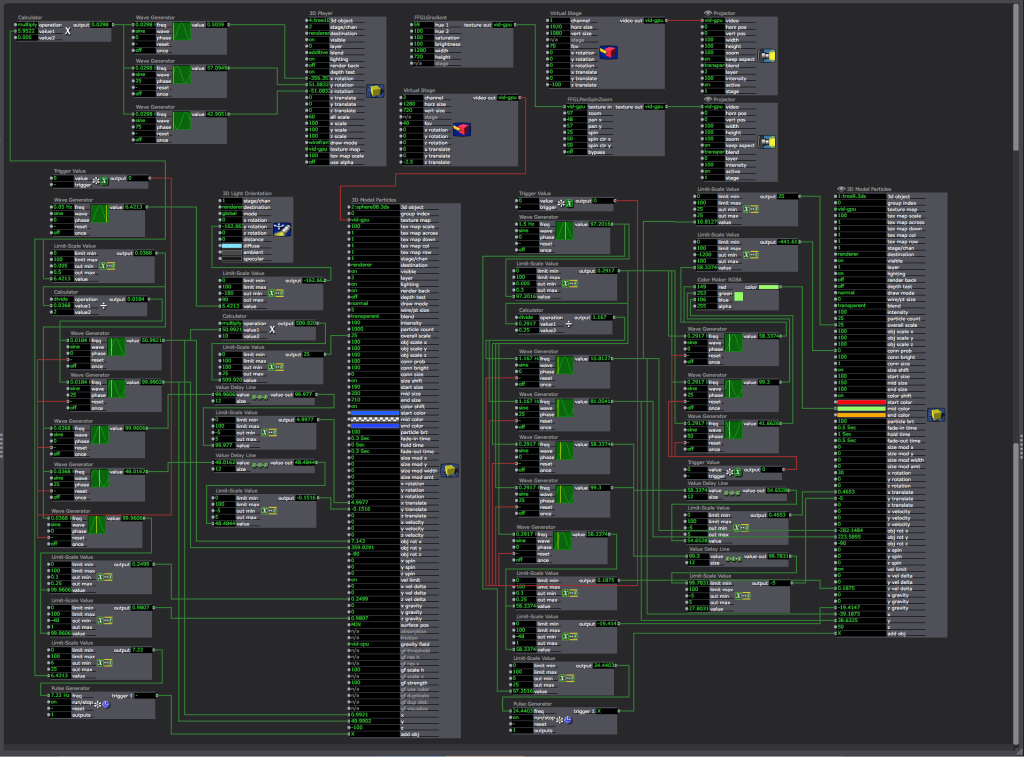3D Model Particles - tips and tricks
-
Hi,
This post was done to demonstrate texture and material rendering of 3D asset files in Isadora. I have had inconsistent results exporting 3DS files from Blender 2.6/2.7 for use in Isadora. I switched to another 3D modeling software and this represents testing the assets in an Isadora patch.
The 3D assets were generated externally (using Cheetah3D), and included the addition of texture image files made in Photoshop with a high percentage of transparency and saved as PNG format (keep the image file names short or the link might break in Isadora). The PNG files have been incorporated into the 3D models material surface in the 3D modelling software, they remain external image files that Isadora must be able to find in the same folder structure as the 3D asset. There is an import caveat here, the Isadora 3D Player or 3D Model Particles will not accept an alternative texture-map input unless there is an existing texture map file that has already been incorporated through an external 3D editing process. As long as there is an external texture file present and linked to the 3D model on import into Isadora you can then change the 'texture-map' input of the 3D actors to any image or video stream.
best wishes
bonemap
-
this looks quite interesting and i'm hoping to recreate the patch- any chance you have a more high-res image?
-
Hi David,
Sure.
Here is a proof of concept animated sequence that incorporates the patch as a scene.
And here is a screen grab of the Isadora patch for the last scene.

-
This looks really cool! Is there anywhere good where I can download free 3d models to practice this kind of stuff with?
-
@bootzilla said:
Is there anywhere good where I can download free 3d models
Hi,
You can try sites like Turbosquid etc that have a lot of free downloadables.
Some of the most interesting 3D models I have used in Isadora have come from Eyewire . It is a research centre that is using an online game engine to map human neurons. So the available 3D models are from previously mapped neurons which is interesting in itself. The following clip was created using a model from Eyewire. I contacted them and was given permission to use the material for a Science Week exhibition.